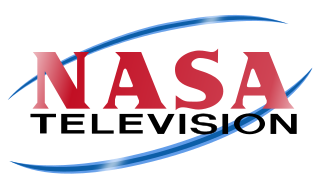
Slow-scan television (SSTV) is a picture transmission method, used mainly by amateur radio operators, to transmit and receive static pictures via radio in monochrome or color.
Television in Quebec is a part of the culture of Quebec, with over 99% of households owning a television in Quebec. Long a preferred medium of many of Quebec's actors, artists, and writers, television has been one of the important forces in Quebec society, including its substantial influence in a series of dramatic changes in the 1960s: the Quiet Revolution.
TVA is a Canadian French-language terrestrial television network, owned by Groupe TVA, a publicly traded subsidiary of Quebecor Media.

Amateur television (ATV) is the transmission of broadcast quality video and audio over the wide range of frequencies of radio waves allocated for radio amateur (Ham) use. ATV is used for non-commercial experimentation, pleasure, and public service events. Ham TV stations were on the air in many cities before commercial television stations came on the air. Various transmission standards are used, these include the broadcast transmission standards of NTSC in North America and Japan, and PAL or SECAM elsewhere, utilizing the full refresh rates of those standards. ATV includes the study of building of such transmitters and receivers, and the study of radio propagation of signals travelling between transmitting and receiving stations.

The Société de télédiffusion du Québec, branded as Télé-Québec, is a Canadian French-language public educational television network in the province of Quebec. It is a provincial Crown corporation owned by the Government of Quebec. The network's main studios and headquarters are located at the corner of de Lorimier Street and East René Lévesque Boulevard in Montreal.

TV5Monde, formerly known as TV5, is a French public television network, broadcasting several channels of French-language programming. It is an approved participant member of the European Broadcasting Union.

Super Écran is a Canadian premium television network owned by Bell Media. It airs a mix of commercial-free films and television series. Films are primarily sourced from the United States and Canada, while the television series mostly consist of original series and programs from HBO and Showtime in the United States.

Canal 13 is a Chilean free-to-air television channel. Informally known in Chile as El 13, it is the second oldest television station in the country. It was launched on 21 August 1959, on VHF channel 2 of Santiago, in a broadcast led and founded by a group of engineers from the Pontifical Catholic University of Chile. Subsequently, the TV station moved its frequency to VHF channel 13, which gave rise to its current name. In its beginnings, one of its most important milestones was the broadcast of the 1962 FIFA World Cup, which was hosted in Chile.
CBAFT-DT is an Ici Radio-Canada Télé station in Moncton, New Brunswick, Canada, serving Acadians in the Maritimes and Franco-Newfoundlanders in Newfoundland and Labrador. It is part of a twinstick with Fredericton-based CBC Television station CBAT-DT. CBAFT-DT's studios are located on Main Street in Moncton, adjacent to the Dieppe border and the CF Champlain shopping centre, and its transmitter is located on Timberline Road in Moncton.

Food Network, formerly called Food Network Canada, is a Canadian English language discretionary specialty channel based on the U.S. cable network of the same name. It airs programming related to food, cooking, cuisine, and the food industry. The Canadian version of Food Network is a joint venture between Corus Entertainment and the U.S. network's parent company Television Food Network, G.P..
Rogers TV is a group of English-language community channels owned by Rogers Communications. Many of these channels share common programs. Rogers TV broadcasts in the Canadian provinces of New Brunswick, Newfoundland and Labrador and Ontario. Rogers TV is available only in communities served by Rogers' cable and telecom division, and is not carried by other television service providers. Its French counterpart is TV Rogers.
Community television in Canada is a form of media that carries programming of local community interest produced by a cable television company and by independent community groups and distributed by a local cable company.
TSN2 is a Canadian English-language discretionary sports specialty channel that acts as the secondary feed of sports-centred channel The Sports Network (TSN) and owned by CTV Specialty Television Inc. It was launched in its current form on August 29, 2008.

Shaw Multicultural Channel is a Canadian ethnic cable television community channel, offering programming in 20 different languages. It is owned and operated by Shaw Communications, and is available on cable systems in Vancouver and Calgary regional markets. The channel operates on cable channel 4 in the Greater Vancouver region, on cable channel 10 in the Calgary Region and on Shaw BlueCurve TV channel 901 in those regions.

NASA TV is the television service of the National Aeronautics and Space Administration (NASA). It is broadcast by satellite with a simulcast over the Internet. Local cable television providers across the United States and amateur television repeaters may carry NASA TV at their own discretion, as NASA-created content is considered a work of the U.S. government and is within the public domain. NASA TV is also available via various cable, satellite, and over-the-top media services worldwide. The network was formally created in the early 1980s to provide NASA managers and engineers with real-time video of missions. NASA has operated a television service since the beginning of the space program for archival purposes, and to provide media outlets with video footage.

WWE Network is a Canadian English language discretionary specialty channel programmed by WWE and distributed by Rogers Sports & Media. Its programming consists entirely of the linear feed offered as part of the WWE Network video streaming service.
UPI Newstime was a cable television network founded by United Press International in 1978, and premiering July 3 of that year. UPI Newstime was the second 24-hour all-news television network in the US for cable TV, following AP Newscable for 13 years and predating CNN by 2 years. UPI Newstime was unique in how it distributed its programming to local cable TV (CATV) headends via satellite, using a form of slow-scan television, or SSTV technology. Using SSTV reduced satellite transmission costs for UPI and was suitable at the time for the programming produced by UPI for the channel, which mainly relied on still slides and wirephotos acquired by UPI's own newsgathering operations.
A discretionary service is a Canadian specialty channel which, as defined by the Canadian Radio-television and Telecommunications Commission, may be carried optionally by all subscription television providers. It replaces the previous category A, category B, category C, and premium classifications.










